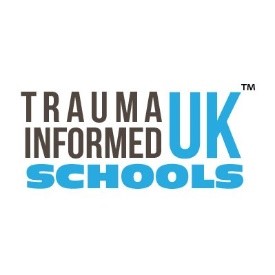Helping with Anxiety

Anxiety can often be missed in children with a learning disability, as it is assumed to be a part of their diagnosis, such as autism or ADHD. It can be difficult to know whether a child needs support for anxiety, or whether the presenting behaviours are a part of their neurodiversity. Despite this, children with a learning disability are more likely to experience anxiety than any other children.
For those who have limited communication skills, anxiety can present as ‘challenging behaviour’ due to the child’s inability to verbalise how they are feeling.
KindleKids have some supporting information, tips and techniques. I have shared some of these below, but please go to their website if you would like to read the full article. I have also gathered some useful resources which are mentioned within the information. You can download them from the bottom of the page.
Signs of anxiety:
- Total withdrawal
- An increase in obsessional or compulsive behaviour
- An increase in verbal obsessions such as needing constant reassurance or asking the same questions repeatedly
- Increased retreat to their special interest
- Escalating rigidity in routines
- Refusal to move from one place, in particular from home, to go to school
- Increased tearfulness and emotional response to situations
- Increase in frustration or aggression
- Threats to self harm
How you can help with prevention
- Identify difficulties that may contribute to your child’s anxiety. It would be beneficial, where possible, to work with your child to include them in helping you to identify difficulties and devise practical ideas to help deal with these difficulties. There are not always obvious triggers, but in instances where there are, ABC charts such as those used in Cognitive Behaviour Therapy can be useful for identifying the cause of the anxiety.
- Anticipate changes and provide visual reminders for regular routines, changes in routine and in preparation of experiences. This includes the use of a visual routine/timetable, photos, and calendars. Social stories are also very useful in this regard.
- Routine is important as it provides structure and creates order out of your child’s perceived chaos. When kids have a sense of structure and predictability, it increases their sense of control and may reduce anxiety.
How you can help with treatment
- Notice when a child seems more anxious – recognised symptoms, such as rocking or hand-flapping
- Self-Regulation is the process of helping regulation to respond to the escalation in anxiety by learning ways to regulate and manage their own behaviour and emotions.
- Using relaxation methods is a way to help your child to calm down. Methods used depend very much on the individual – watching a video, breathing exercises, listening to calming music, withdrawal to a quiet room, creating a decrease in social demands etc. Practice whichever method of relaxation is chosen at frequent and regular intervals for it to be of any practical use when anxieties begin to rise.
- Massage, aromatherapy, deep breathing and using positive thoughts can be effective. These should be administered with caution and according to the individual child’s likes and dislikes avoiding sensory defensiveness.
- Visualisation using laminated photographs, postcards or pictures of a pleasant or familiar scene may help children to have a visual reminder of how to regulate their anxiety.
- Physical activity including using the swing or trampoline, going for a long walk, perhaps with a dog, or doing physical chores around the home can help decrease feelings of anxiety. Many children also experience animals/pets as calming.
- Distraction/re-direction can shift attention away from whatever is
 causing the anxiety and create a calming effect. It is important that this is done when the first signs of anxiety are noticed, as when anxiety has escalated it may be difficult for your child to think rationally and respond to you.
causing the anxiety and create a calming effect. It is important that this is done when the first signs of anxiety are noticed, as when anxiety has escalated it may be difficult for your child to think rationally and respond to you. - Social stories are a very useful tool in helping a child to understand and respond to their anxiety. It is useful to use the stories to provide them with coping strategies and techniques for managing their anxiety.
- A physical space to calm down would be important. Creating an environment or safe space with low arousal or gentle sensory input such as a lava lamp is often helpful.
- A ‘sensory diet’ may be helpful as many children with sensory processing issues may feel overwhelmed and anxious when they have too much stimulation. It is useful to be aware of this, particularly in unfamiliar situations.
- Visual supports are a great way to help children anticipate when an event will begin or end and to help them shift focus between tasks with reduced levels of anxiety. This includes the use of photos, symbols, lists and egg timers, to name a few.
- Support from other children and adults can help a child to feel safer. Familiarity can help reduce feelings of anxiety.
- Self awareness is an important part of supporting a child with anxiety. Adults and older children can be taught to recognise these symptoms themselves, although some might need prompting. Teaching the child to recognise emotions and when they are escalating can help them to regulate their anxiety. This can include the use of feeling faces, stress scales, traffic light recognition symptoms and recognising symptoms of anxiety such as physical reactions to stress.
For more information, please visit KindleKids.







